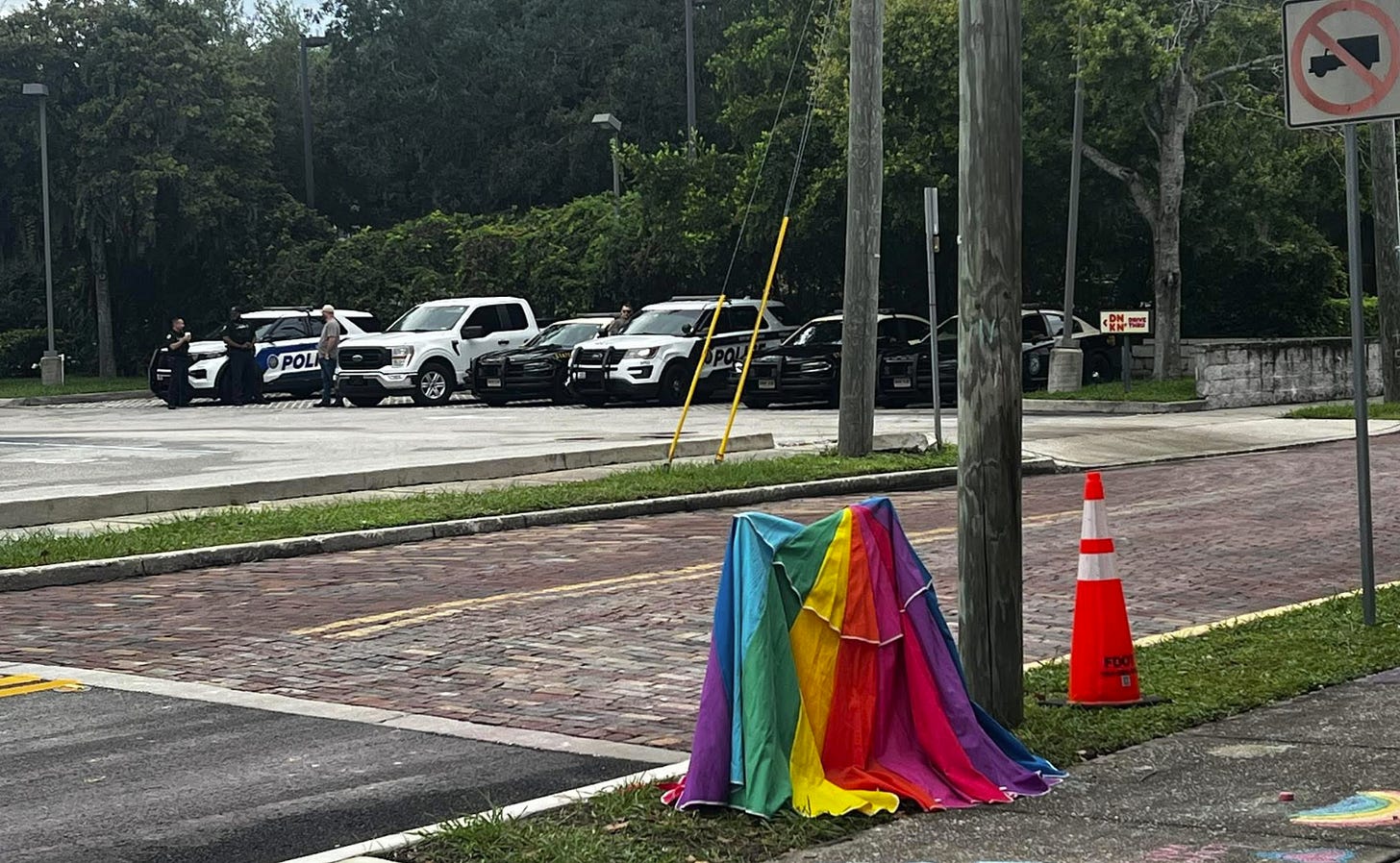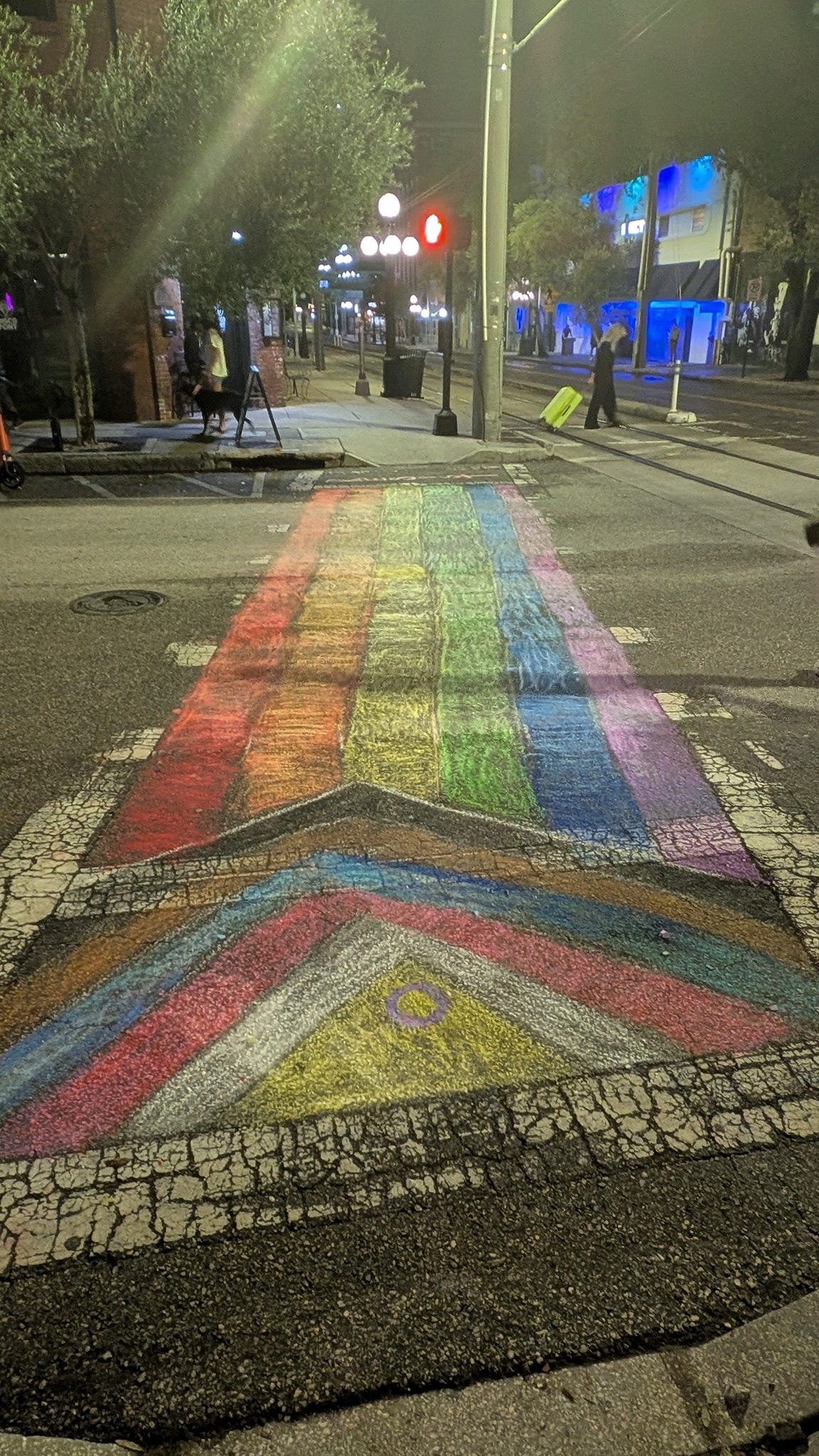Florida Deploys Police To Stare At Crosswalks, Stop Them From Being Painted Rainbow Colors
The move comes after citizens repainted the Pulse memorial sidewalk in Pride colors.
A war over crosswalks is erupting in Florida. After statewide efforts to erase Pride crosswalks began this week, communities have resisted—repainting them, fighting attempts to strip them, and in some cases, restoring rainbow colors overnight. Nowhere is this battle more symbolic than at the Pulse memorial in Orlando, dedicated to the LGBTQ+ people murdered there a decade ago. Earlier this week, officers painted the rainbow stripes into stark black and white. Citizens repainted them. Road crews erased them again. The back-and-forth has escalated to the point where the state has now deployed as many as six police squad cars to guard asphalt, their sole mission to prevent the reemergence of rainbow colors at the site of one of the worst anti-LGBTQ+ massacres in U.S. history.
Earlier this week, Transportation Secretary Sean Duffy sent letters to all 50 governors calling for the removal of Pride crosswalks. Florida was the first to comply. Within days, state officials painted over the rainbow crosswalk at Orlando’s Pulse memorial, the site of the 2016 massacre that claimed 49 LGBTQ+ lives. The next morning, though, residents showed up with chalk, restoring the colors by hand. By evening, the crosswalk was painted back in rainbow hues. “We refuse to be erased. We will not let hate win,” said Nadine Smith of Equality Florida.
Florida’s Department of Transportation once again sent crews to scrub out the rainbow colors. The following day, residents returned to re-chalk the Pulse memorial crosswalk. But this time, they were met with something new: a line of police officers stationed at the site, watching to ensure no color would be laid down. In a recording obtained by CNN, Rep. Anna Eskamani approaches officers who justify their presence by calling the crosswalk “safety issue.”
Citizens were quick to call out the absurdity of stationing a squadron of officers to guard a single crosswalk. “Having the police watch over us is unsettling,” one visitor told local outlet WESH. “It’s a sign of the times and sadly becoming the new normal.” Rep. Anna Eskamani echoed the frustration: “It’s sad that we’re in a position where state resources are being used to enforce colors on the road. You have potholes to fix, real crime to go after.”
Meanwhile, the resistance appears to be spreading across the state. In Miami Beach, city officials are pledging to resist any action to remove at least one Pride crosswalk there that is made up of colored bricks in a mural pattern. Meanwhile, new pride crosswalks went up in chalk in Ybor City the very same day, with one citizen stating, “You can try to make chalk illegal in the state of Florida, but we will still find a way. I don’t know of a single rainbow crosswalk that has ever killed a child. Yet I can name countless bus stops across this state without traffic lights—real dangers where tax dollars could be used to protect lives, rather than being wasted on erasing LGBTQ+ visibility.”
The message from Florida’s citizens is unmistakable: no matter how many times the state tries to erase them, LGBTQ+ people will not disappear. Florida has already barred many trans adults from healthcare and banned books with queer characters from classrooms—now it’s trying to erase even the sight of rainbow colors from the street. But it appears that no squadron of police cars can successfully make those colors go away. Meanwhile, the Florida government continues to be willing to pour its resources into surveilling paint on the road while ignoring real issues of safety, infrastructure, and justice.




That just means that all the unguarded crosswalks are fair game.
This is comically pathetic.